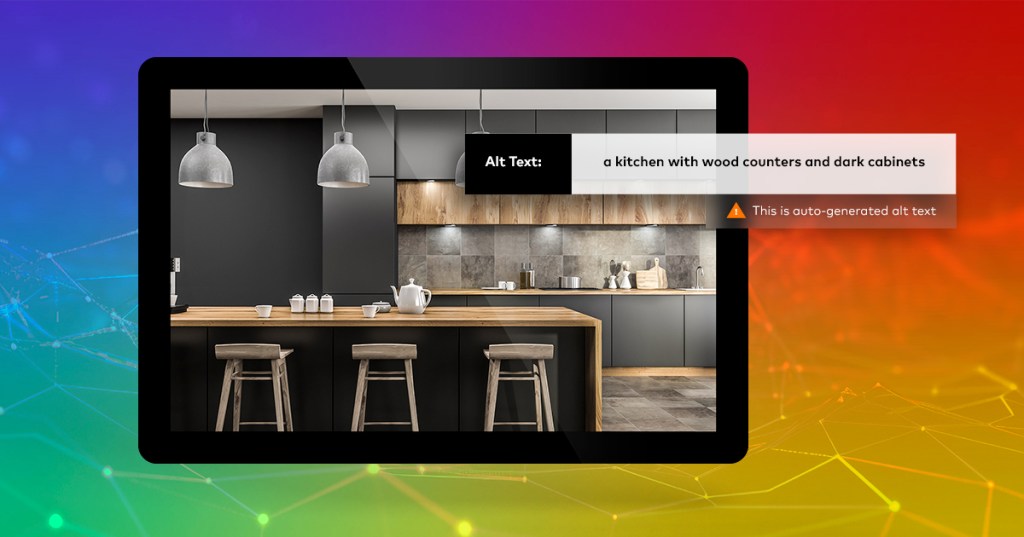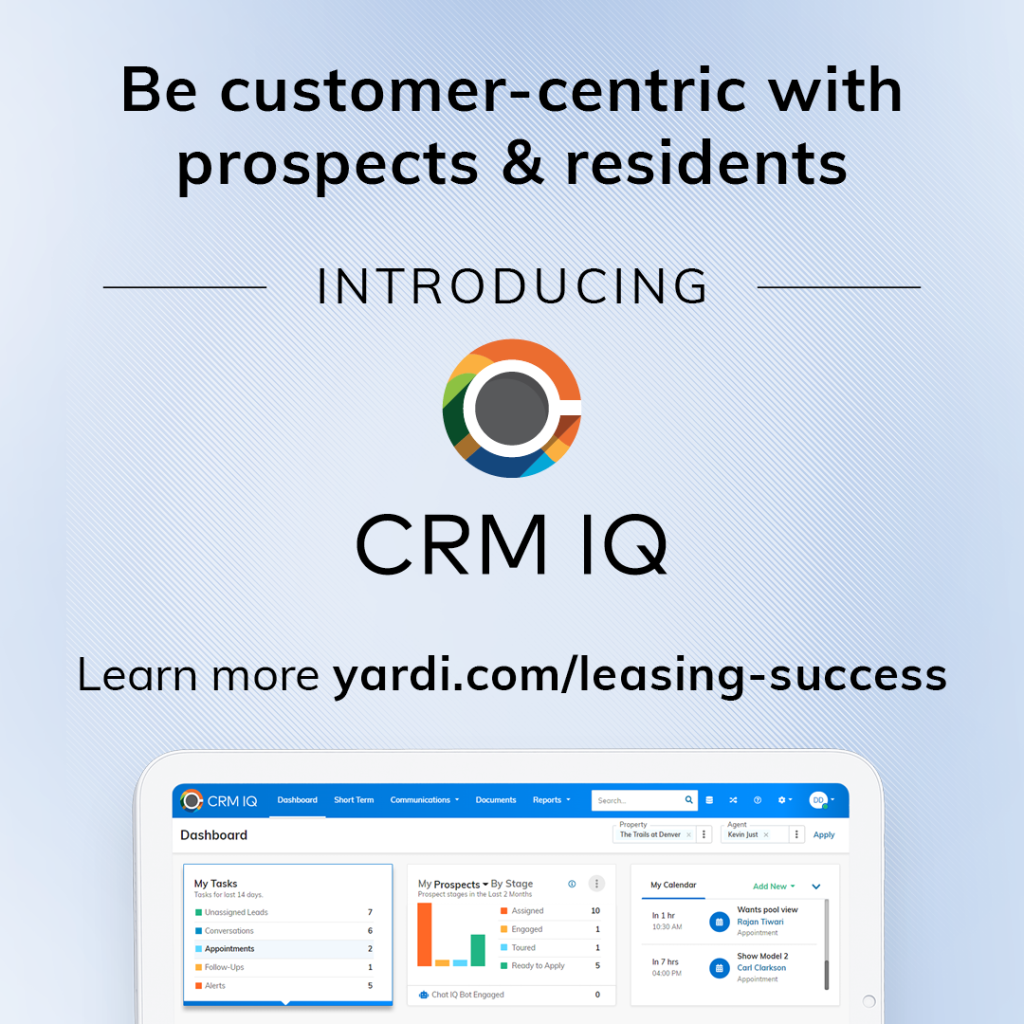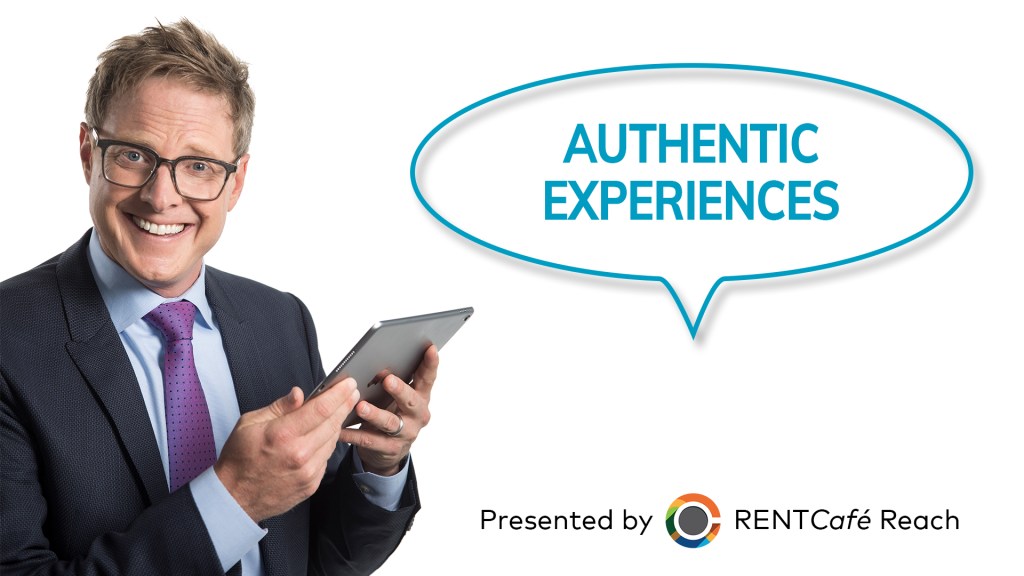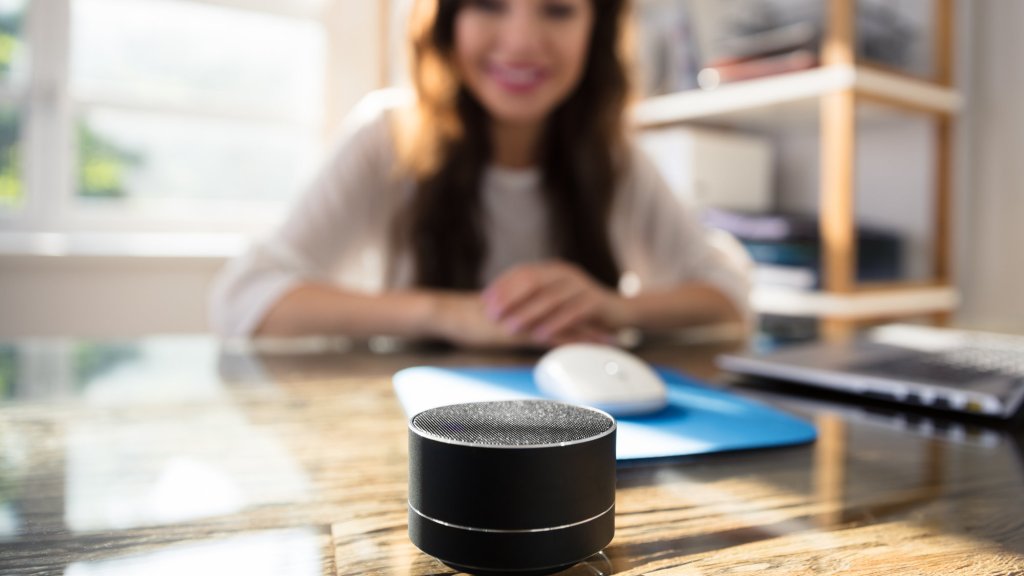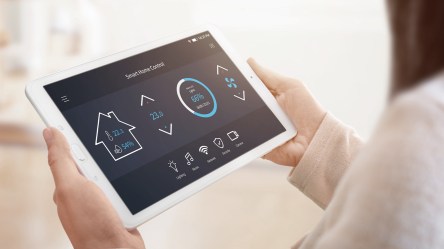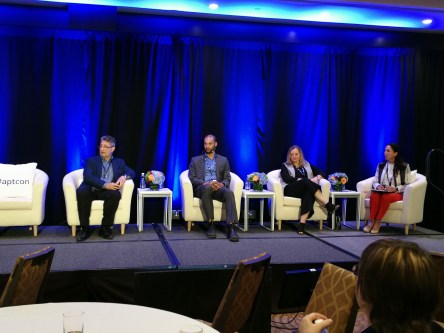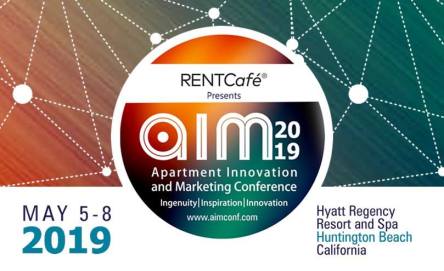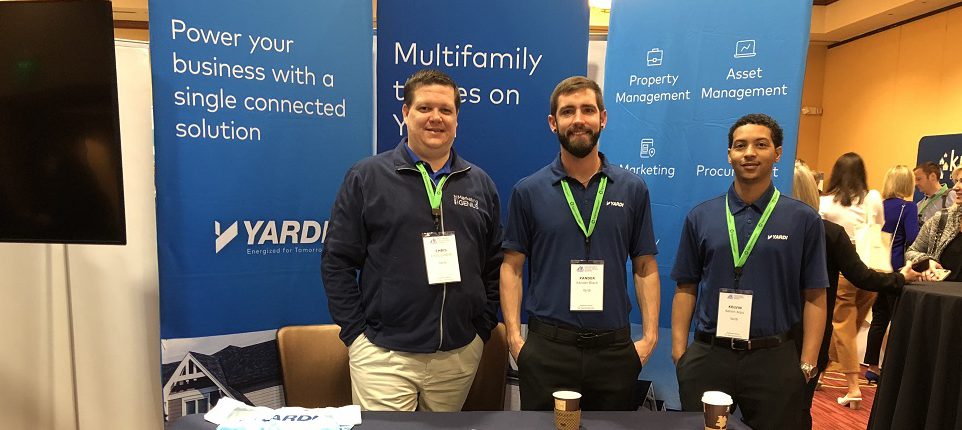Did you know that residents can choose their electricity provider in certain markets? Retail energy markets give consumers the power of choice, which includes the ability to select a competitive energy rate. Read on for information about retail energy providers, green alternatives and where renters are finding the best deregulated energy sources to protect against rising electricity rates. Energy basics: the electric grid Most consumers take it for granted that the lights will turn on at the flip of a switch. However, the system that makes this possible is complex, involving power plants, transmission lines and various market participants. According to the U.S. Energy Information Administration (EIA), the U.S. electric grid comprises more than 12,500 utility-scale power plants that serve more than 160 million customers. Electricity isn’t easily stored, so grid operators and regional balancing authorities must constantly work to balance production and consumption. While supply and demand influence the price of electricity, regulators closely monitor and govern the market. Some authorities work to ensure grid stability while others focus on supplying and billing consumers for the electricity they draw from the grid. Under the traditional model, consumers depend on a single, tightly regulated provider in a vertically integrated power market. In deregulated energy markets (including 17 states and the District of Columbia), multiple energy providers compete to sell retail electricity to residences and businesses. This provides consumers the choice to shop among various retail plans, which offer competitive pricing, green energy options and other value-added services. Power in consumers’ hands With the freedom to choose the best deregulated energy sources comes the challenge of selecting the right plan. Understanding contract terms, rates, hidden fees and energy plan options can help businesses and residential energy users manage costs. So, how can renters make the...
AI Alt Text Generator
For RentCafe websites
Great news for RentCafe websites on the RentCaffeine platform! We’ve added an AI alt text generator that makes uploading new photos faster and easier. This tool creates alternative text — more commonly known as alt text — automatically for you. Alt text is copy that describes images using words, making your website more accessible to people who have a hard time viewing or understanding pictures. That’s right, as promised by countless articles, artificial intelligence is here to help you! (As a bonus, we promise that this version of AI has no aspiration to take over the world.) Keep reading to learn what it is, why it’s important and how to use it. Then check out some client feedback about our new AI tool for RentCafe websites. AI tool for alt text Our AI tool for alt text automatically writes image descriptions for you, so you don’t have to. It will create high-quality image descriptions of new photos you add to your media library. It will also generate descriptions for existing photos that are missing alt text, helping you quickly fill accessibility gaps. Why it’s important Alt text is alternative text that that describes the appearance or function of an image online. It’s important to people and search engines alike. Alt text is read aloud by screen readers used by visually impaired users. If an image fails to load on your site for any reason, the alt text will be displayed so people know what’s supposed to be there. Alt text is also crawled and indexed by search engines to better understand the content of your page. Unfortunately, it’s often overlooked or skipped in the process of uploading photos. Entering alt text can be time consuming when you’re working with more than a handful of images. Manually entering alt text also adds potential for typos and other human errors. Mislabeled images are just as bad as unlabeled images. Our AI alt text generator fixes this, making the process of adding alt text to your images easy and instant. “I’m proud that RentCafe continues to build accessible websites. We want to ensure our websites are inclusive, and the AI alt text generator will help our clients with that,” said Nomo Nagaoka, project manager for RentCafe. “Although alt text is simple to manually set up, it is often missed — either it gets forgotten or people run out of time. But now we’ve solved for this. Any time an image is uploaded, through our AI solution, we’re generating recommended alt text. It’s easy to review and edit as necessary. No images will be without alt text moving forward, and our clients will spend less time trying to manually write out descriptions of the images.” (It’s only fair to share that when Nomo first previewed this technology to our audience at OutREACH Live in Palm Springs, the attendees actually started applauding mid-presentation.) How to use it As stated earlier, you can add auto-generated alt text to images that you upload to your media library, as well as existing images that are missing alt text. The automated alt text generator was enabled for all clients in the March release, so log in and check it out if you haven’t made website updates lately. You can review and accept AI-generated alt text from the media library, Site Editor or your SEO Dashboard. When alt text has been auto-generated, a message appears below the image alt textfield that says, “This is auto-generated alt text.” It’s a best practice to quickly assess the auto-generated text to make sure it works for the image being described. Review your alt text and either confirm or modify it before saving your changes. If you save changes, the modified alt text gets saved and the “This is auto-generated alt text” message will be removed. Does it help with SEO? Kind of. By default, having some alt text is better than having none at all. Search engines like...
Introducing CRM IQ
Customer-Centric CRM Software
RentCafe CRM IQ is the latest innovation from Yardi in customer relationship management solutions for multifamily. It puts your customer at the center of the relationship to seamlessly manage prospects, applicants and residents for the entire leasing and resident journey. CRM IQ also provides a platform for centralized leasing offices and enhances the capabilities of other centralized property operations. Built into Yardi Voyager and the RentCafe product suite, CRM IQ has enhanced features that benefit site teams, owners, managers and their customers. Keep reading to explore what customer-centric innovation from Yardi can do for your business. What makes CRM IQ unique? Your customer is more than a renter, and your CRM system should reflect that. CRM IQ doesn’t stop prioritizing your prospects once they convert. Instead, CRM IQ manages your customer interactions through every stage of the leasing and resident journey. With robust features designed to support the full customer lifecycle, CRM IQ is built to guide your prospects into applicants, and your applicants into satisfied residents, ready to renew. The result is a better customer experience made possible by customer-centric software. What’s new with CRM IQ? With features that automate communication and improve visibility across prospects and residents, CRM IQ is a one-of-a-kind solution in the multifamily industry. Here are more details that make it even more unique: Enable centralized leasing office (CLO) processes with customer-centric views and site clustering. CRM IQ has intuitive features that aggregates properties within a central view and shares activities across regional attributes. Save staff hours by helping prioritize the most valuable tasks and utilize remote and clustered staffing offices.Prioritize higher-quality leads and automate lead nurturing with event-based AI. More leads don’t always mean more conversions — this is why CRM IQ prioritizes prospects at every stage of...
Get More Tours
3 Tips That Will Help
Recent world events surrounding COVID-19 have led us all to adopt new consumer behaviors, and it’s likely that many of these behaviors will stick. With that in mind, it might be time for us to revisit our approach to apartment tours. Did you know that 80% of renters seriously considered just four or fewer properties during their last apartment search, according to the 2020 NMHC/Kingsley Apartment Resident Preferences Report? And 38% of renters only toured one or two communities before making their rental decision. That number is likely to grow now that we’ve all grown accustomed to doing more online. So how do you get your property on renters’ short list — especially now that they’re more likely to be influenced by online content than in-person experiences — and secure more tours? Keep reading for three data-driven tips for getting more property tours, whether virtual, self-guided or led by an agent. Then, watch a video from our “Moments of Genius with Drew Davis” series to learn how you can create a better virtual experience to attract renters who are actively searching for apartments. Provide unit-level photos & details Renters in the same survey were asked, “What would you need to see online to rent an apartment without seeing it in person?” The top three answers were: 83% said unit photos 64% said community/amenity photos 64% said unit location within the community That’s right. Just like other online purchases, your prospects want to see exactly what they’re getting for their money. To get them to tour (or lease online, sight unseen), you need to make sure that your property website is attractive, user friendly and full of pictures, including an accurate property map. Unit-level photos and video tours create an experience that not only shows the unit but also builds a foundation of trust for your brand and leasing associates. Additionally, property maps with unit-specific locations help prospects envision life in their new home on your property. Are they close to the pool? Do they have a sunset view? The more supporting material you can provide, the quicker prospects will be able to mentally move-in. “Did you know that roughly 60% of searches are mobile? That means a lot of web visitors are viewing your site on their phones,” said Catriona Orosco, director for RENTCafé Reach. “Be sure to include vertical photos as well as horizontal ones to give them a better viewing experience.” Add online appointment scheduling & tour options 80% of renters said they would use online appointment scheduling in their next apartment search. Online appointment scheduling accommodates busy renters who don’t have time or simply don’t want to call during office hours. After all, consumers are used to booking everything from restaurant reservations to DMV appointments online. Data shows that self-scheduled appointments convert at a high rate. In fact, QuadReal, a RENTCafé client, found that 33% of its self-made appointments converted to leases. Additionally, another 59% of surveyed renters said they wanted self-navigated virtual tours, and 26% wanted real-time video tours done through FaceTime or a similar service. Adding these options to your website or as part of your leasing agent follow-ups will help you meet the needs of a greater range of renters. Offer self-guided tours Of the 370,000 survey participants in the NMHC study, 16% of renters said they would prefer a self-guided tour, while another 15% indicated no preference between self-guided or community-staffed tours. That’s almost 115,000 prospects who would happily tour your property unguided, expanding your tour offerings and giving your staff more time to assist guests and residents with urgent needs. And that study happened pre-pandemic. A more recent survey of 4,974 apartment shoppers on RentCafe.com revealed that 70% would take a self-guided tour now. Why do some prospects prefer self-guided tours? Their responses were almost equally divided between these four reasons: It’s more convenient for their schedule (to book tours outside...
Real Estate Resiliency...
Supporting changing digital needs
Note: the following originally appeared in Gulf Property and is reprinted here with permission. Rapid advances in technology continue to reshape how the real estate industry operates, and how quickly one adapts to change is critical for success. Yardi continues to see growth in the adoption of its digital platforms by clients wishing to improve their business models and respond to challenges. Catering to nearly every real estate vertical, Yardi has also now expanded its support resources for clients with free webinars and other online resources. While digitisation has been a steady movement in real estate, its adoption has only really accelerated in these recent weeks with every segment of the industry having to cope with work-from-home regulations not just in the UAE, but around the world. Contactless property management enabled by RentCafe A tool that has become extremely valuable due to current events is Yardi’s RentCafe app for residential real estate. With more than six million residential units using the app, RentCafe benefits tenants at various levels: it helps to check the unit listings or available inventory in the market, facilitates online application and encourages tenant self-service. “A tenant can log on to the app and search for properties, shortlists the units they like and do a 360-degree viewing of the property, similar to a walk-through,” explains Aditya Shah, head of operations, Middle East at Yardi. “When they decides on a unit, they can submit an online application and then subsequently the property management firm can generate a lease contract. The entire process is contactless and this has helped our customers greatly during the stay-home period.” Available on Apple and Android mobile devices, the RentCafe app also has tenant self-service features whereby a tenant can use the apps for paying fees, service charges,...
Creating Community
Bringing Residents Together Online
Traditionally, creating a sense of community has been a great way to make residents feel at home, leading to positive reviews, referrals and increased renewals. Multifamily properties host happy hours, movie nights and exercise classes to help renters connect with each other and the property team. They create and update shared spaces and amenities to make sure they are comfortable and welcoming. But how do you create a sense of community when people can’t gather? Property managers everywhere are asking this question now because of the social distancing measures put in place during the COVID-19 pandemic. We’re here to help. First, watch a video from our new “Moments of Genius with Drew Davis” series to get creative community building tips you can use right now. Then, see what the award-winning team at Bozzuto is doing. And finally, discover tech tools that can help bring your residents and team members together. 6 Creative Ideas Watch this short, five-minute video from Drew Davis to learn six creative ways and four key principles to foster community at your properties — even when we can’t all be in the same place. Drew is one of the world’s top marketing experts. He is working closely with us to share monthly tips specific to property management as we navigate this rapidly changing market together. Wasn’t that fun and inspiring? Drew is just the shot of positive energy we need right now, and we’re excited to see what he has in store for us. Subscribe to “Moments of Genius” now to see new episodes when they’re released. #BozzutoStaysHome When stay-at-home orders started getting handed down, the team at Bozzuto knew they had to spring into action. “We asked ourselves, ‘How do we continue to provide value to our residents when they can’t use the amenities?’” said Nicole Wells, content marketing manager for digital marketing and strategy at Bozzuto. #BozzutoStaysHome was the result, an online program that connects residents, includes the community and celebrates the idea of sanctuary, ultimately promoting shelter-in-place behaviors to flatten the curve. It includes a calendar of weekly virtual events led by community partners like yoga classes and cooking demonstrations as well as curated playlists designed to lift spirits and nurture a sense of connection. Events are shared live on Facebook and Instagram. Facebook Live events like this Vinyasa yoga class are recorded and shared so anyone can watch anytime, racking up hundreds of views. “To get started, we put together a cross-team task force. We asked our residents what they wanted to see,” shared Wells. Once the concept started coming together, “We created assets for our communities to use so they don’t have to do that extra work themselves. They already have enough to focus on right now.” With more than 400 posts using the hashtag on Instagram in just a few weeks and hundreds of viewers to their live and recorded events, #BozzutoStaysHome is picking up traction. “Bozzuto is helping residents engage in a little bit of fun at home during quarantine,” said Wells. “They’re receptive to that, and we’re happy to be a bright spot.” Tech That Connects People can’t participate in your community engagement efforts if they don’t know about them. In the words of Drew Davis, “Make sure your residents know where to go for the latest information about your property and the fun things you’re doing to keep people safe and connected.” With the RENTCafé resident portal and RENTCafé Resident app, you can quickly and easily share information about social distancing efforts and upcoming online events. You can post events to your community calendar and bulletin board, send survey emails and even schedule push notifications if your residents have opted in on the app. Both the portal and the app help your team stay connected while cutting down on face-to-face interactions by taking communications, payments and work orders online. With a 4.8 star rating and more than...
Rent Deferral Technology
Help Residents & Recover Rents
With most states issuing stay-at-home orders and more than 10 million Americans filing for unemployment in March, many residential property managers are finding themselves in a challenging position during the COVID-19 pandemic. More than ever, their renters need to stay in their apartments, but they may not be able to afford rent. How can property managers help residents who have been financially impacted by the global coronavirus health crisis — without jeopardizing their operations? With input from its clients, Yardi came up with a solution. Introducing new rent deferral & recovery tech One way to provide resident assistance during tough economic times is rent deferment. Rent deferment is the practice of partially or completely postponing payments for a period of time. The deferred amount is recovered later, when the situation improves. Faced with an urgent and overwhelming need for technology capable of handling deferrals on a large scale, the Yardi development team sprang into action and created a solution for its clients in under two weeks. “With the number of unemployment claims skyrocketing, our clients reached out to us for help accommodating residents who have been financially impacted by COVID-19,” said Tamara Berndt, vice president of residential consulting practices at Yardi. “So we created software that’s able to manage and track resident requests, deferrals and recovered payments.” This new technology will be rolled out to clients before May rents are due. How it works At a resident’s request, a rent deferral and recovery payment plan can be set up in Voyager or RENTCafé CRM. The property management company can record the reason for the deferral as well as the amount that is being deferred and for how long, then set a recovery period start date and duration. The program will automatically spread the total deferred amount over the recovery period. Once the rent deferral agreement is signed and posted, lease charges will be automatically created each month with the deferred amounts and recovery charges as appropriate. Gross potential rent is not impacted, and all records are maintained in a clear and organized fashion. Documents related to the deferral, including proof of furlough or layoff and the repayment plan agreement, are stored in the resident record. If a property uses the RENTCafé resident portal, the process is easy for residents seeking accommodation. They can log in and upload proof of layoff or furlough documents. Once a payment plan is authorized, a signature document is delivered through the portal. All leaseholders can electronically sign and submit the agreement. Everything is done online or in the RENTCafé Resident app to maintain social distancing. The property management company also has an option to post an announcement of its rent deferment program in the portal. Clients who don’t use RENTCafé are still able to complete this process completely online, but residents will have to submit supporting documents and signed agreements via email instead. Who can use it The new rent deferral and recovery payment plan technology is available to residential clients, including multifamily, single family, affordable and military properties. A rent deferral solution for commercial property management clients will also be available in the near future. Deferment tracking The solution currently has two reports available to help track deferred rents and recovered payments. A listing report shows which residents are on a payment plan, and a repayment report displays recovery payment progress. Additional reports will be added in future releases. Learn more Join a rent deferral webinar, log into Client Central to watch the recording or contact...
Critical Communications
Keeping Residents Informed
During chaotic times like the current COVID-19 pandemic, it’s more important than ever to build and maintain trust with your residents through clear, proactive and consistent communication. Here are four tips to help you navigate resident communications during a global health crisis: Lead with empathy Write a message for humans, from humans. Remember, your units are your residents’ homes. Say, “Here’s what we’re doing to help keep people safe, and here’s what you can do protect your home and family.” Point them to resources in their neighborhood and reliable news sources. Are you changing policies or augmenting services during this time? Maybe you’re adding chat tools to limit personal interactions in the leasing offices. Or implementing curbside drop off for rent checks. Whatever it is, let them know that you’re taking action to adapt to the changing environment. Emphasize online services Remind renters of the online services you have to help limit unnecessary virus exposure. Plainly list all the ways they can pay rent or submit a maintenance request electronically. Add links where applicable. It might seem like overkill, but your long-term residents may not be aware of options that have been added since they moved in. Can they pay rent by text or using the RENTCafé Resident Services Alexa skill? Do you have a mobile app for residents that lets them communicate with your leasing or maintenance staff? Make sure they’re aware. Set expectations Let residents know how often you plan to be in touch with them. Are you going to check in once a week? Every 48 hours? When there are new updates from local or national health organizations? Be clear, so they know what to expect. Worried that you might be bothering them? Unless you’re emailing daily, don’t be. The 2020 NMHC/Kingsley Apartment Resident Preferences Report indicates that more than 80% of renters want to hear from their management company at least monthly in non-emergency situations. Get your message out A well-written message is only effective if people read it. Make sure you’re reaching the people you need to communicate with by distributing your message across multiple platforms. Send an email to your residents Post a message in your resident portal, if you have one Share an excerpt on your social channels that includes a link or phone number where they can get more information Build a custom webpage on your corporate or property website with information about how you’re making things safer for prospects, residents and your team Text updates to residents who have opted in to SMS communications Apply what you learn during this time We’re all going to learn some important lessons in the next few weeks as we work together to slow the spread of COVID-19. Make a note of the different situations your team has to react to as they come up — then use those notes to create a proactive crisis plan for the future. A solid crisis communication plan usually includes some combination of these things: Designated team members, usually from multiple teams Corporate response plan including sample statements for a variety of scenarios Dedicated customer service channels Social media response templates Multi-scenario escalation plan Post-event customer outreach and feedback collection If you want more guidance, Hubspot pulled together six crisis communication plan examples. Whether it’s another virus, a local weather disaster or something else, having a crisis communication plan in place never hurts. The worst-case scenario is also the best-case scenario: you just might not use it. Team Yardi is here for you. If you need help using our RENTCafé resident experience software and CRM tools, or if you want to learn more about what’s available to you, please reach out to us at [email protected] or (800)...
Spring Marketing
RentCafe & Social Media
As the snow thaws and daylight lingers through the evening, your residents will be itching for fun ways to get outdoors and spend time with loved ones. Catch their attention with your community events! This guide will offer quick and simple steps for launching your events towards success. Before the Event After you’ve planned the event, you’ve got to get the word out. Use Yardi RentCafe to create a blog post about the event. In the post, provide helpful details such as: Date, time and location Admission costs, include an early bird discount to create urgency and motivate the sale Number of non-resident guests that may accompany residents Relevant age restrictions Parking provisions Recommend attire or dress code Details about any items that guests should bring Don’t forget to give the event plenty of personality! Do this through the tone of your text and the Featured Image that you select on the blog post. Once the blog post is complete, use RentCafe to connect Facebook and promote your event. You may choose to pin the post to the top of your newsfeed so that all new and returning visitors will see it. Next, create at least one new visual per week that you can use to promote the event on social media (in addition to your blog post). Fresh visuals are important because they may capture the attention of residents who did not respond to the Featured Image on the blog post. The visuals can be videos, illustrations, or pictures with text. In the latter, limit the text to 20-30 percent of the total image surface area. If an image is too wordy, it will be ignored. Distribute these images on your preferred social media platform(s) each week to spread the word of your...
Digital Conversations
Chatbots in Multifamily
Imagine never picking up the phone to answer prospects’ questions yet still receiving stellar reviews for customer service. Can you see a future where residents only visit the leasing office for friendly conversation? All their questions, concerns, and feedback are addressed without consuming staff time. Chatbots are bringing these seemingly unrealistic expectations to reality—and it’s time for multifamily to reap the benefits. What’s a chatbot and why should I care? A chatbot is an interactive application that relies on artificial intelligence to assist humans. Quality chatbots mimic human communication by using personable language when engaging with users via websites, apps, and text messages. Multifamily housing providers use chatbots to reduce operational costs while improving responsiveness to clients’ needs. Advanced chatbot auto-response systems promptly assist clients without human intervention. Chatbots can guide prospects through the leasing process, assist residents with online bill pay, submit maintenance requests, and issue lease renewals without consuming a second of a leasing agent’s time. As a result, chatbot users can experience improved resident satisfaction and retention. Your competition is likely benefiting from this technology At the end of 2018, about 66.4 million chatbots were in use in the US. That’s a 40 percent boost over 2017’s data. The implementation rates continue to climb. A Spiceworks survey revealed that 40 percent of companies employing more than 500 people implemented one or more chatbots over corporate mobile devices this year. About 80 percent of marketers will implement a chatbot by 2020, estimates Oracle. The popularity of chatbots stems from their effectiveness. They are responsive, patient, and impartial. According to NICE inContact’s 2018 CX Transformation Benchmark, 33 percent of consumers report that chatbots made issue resolution faster. Users also appreciate the responsiveness, convenience, and reliability of chatbots. AI communication is more efficient than email yet still maintains a written record of the conversation that can be emailed to users. Chatbots are more convenient than phone calls because they offer assistance 24/7. This combination of features has helped to establish trust between users and AI. Trust matters. Millennials favor chatbots though adults of all ages are increasingly comfortable with chatbot interaction, even for expensive purchases like an apartment. A Drift survey suggests that 13 percent of adults purchased at least one expensive item using a chatbot and 27 percent have purchased daily necessities. A new-ish technology is already improving Technically, the first chatbot was created in 1966. It felt very much like talking to a robot that had the conversational and comprehension skills of a toddler. But that noble program paved the way for the powerhouses of today. Modern chatbots are equipped with machine learning which makes them more sophisticated than their predecessors—and their technology is improving by the second. When artificial intelligence is paired with machine learning, a chatbot gathers data from each interaction with users and analyzes that data to improve future experiences. Chatbots learn, in a sense, to be more helpful and more natural in their engagement with humans. For example, a chatbot can answer most questions about a property or unit such as square footage, layout, rent rates, pet policies, and amenities. When they encounter questions that they cannot answer, they send a report to operators and improve their services in the future. Each interaction improves future interactions. Additionally, chatbots deliver information promptly and as frequently as prospects request it. Unlike humans, chatbots can repeat information and receive a multitude of questions without a change in temperament or feeling pressed for time. As a result, customer service scores will not be affected by a representative’s mood or tone. What does the future look like? Business Insider reports that 80 percent of enterprises will use chatbots by 2020. Organizations benefit from improved communication between companies and consumers without increasing the manpower needed to handle rote tasks. AIs ability to communicate and handle tasks will become more sophisticated. Natural language processing enhances the usage of chatbots in...
Breed Restrictions
SEO + SEM for flexible pet policies
Did you know that “apartments with no breed restrictions” is a popular Google search query in most metropolitan areas? The trend extends to many secondary markets as well. Properties without breed restrictions can capitalize on a flexible pet policy—if you use strategic SEO. When high-risk isn’t a mandatory “no” Insurance companies’ classification of “high-risk” pets is the result of actuarial and claims data. Over time, the insurance companies analyze data regarding pet-related claims. Breeds that appear in claims the most (thus costing the insurance company the most) will appear on the high-risk list. Commonly listed breeds include pit bulls, Doberman pinschers, rottweilers, German shepherds, mastiffs, Great Danes, Siberian huskies, Alaskan malamutes, and wolf-hybrids. These breeds are large dogs (above 45lbs) which is why some apartment communities restrict by size rather than listing specific breeds. The congregated lists of insurance companies may impact local and state legislation. More than 700 U.S. cities have authorized breed-specific laws. As a property owner, you do not have the flexibility to opt out government-mandated breed restrictions. However, it is often optional for you to accept and enforce your insurers recommend breed restrictions. If you opt to waive the restriction, your property is among a highly sought-after group of apartments in major metropolitan areas. The best of both worlds: accepting all breeds with additional insurance protection If you are in a renters’ market with tough competition, a flexible pet policy could work in your favor. When coupled with additional insurance on high-risk pets, you can address insurance concerns without turning away quality renters. In addition to required renters insurance, consider a mandatory liability policy that covers large breed owners with at least $300,000. The policy may also list the landlord as an additional insured member. Since few communities accept large...
In Renters’ Wallets...
5 Most Valued Smart Home Devices
We’ve all heard that renters are interested in smart home devices. How much are they willing to pay for them, though? We dive into the 2020 National Multifamily Housing Council (NMHC) & Kingsley Apartment Resident Preferences Survey to find out. What renters value is determined by how much they are willing to pay. The Resident Preferences Survey set out to put a monthly price on smart home features that renters crave. Nearly 373,000 renters living in 5,336 communities across the U.S. submitted their opinions on desired gadgets and pricing. The 2020 report is the largest compilation of apartment resident insights to date. Let’s take a look at which smart home features are most valuable to renters. Most Valued Smart Home Features All valuable smart home gadgets are connected to the internet of things (IoT). It takes more than internet connection for renters to value a gadget. The survey reveals that the most valuable smart home features are those that offer a combination of benefits in a single gadget. One of the most valuable smart home features makes the unit more comfortable, functional, and healthy. Survey respondents are willing to pay $36 for smart or dynamic glass. The technology helps to moderate indoor temperatures. It also reduces glare on display surfaces like televisions and tablets. Additionally, the dynamic glass promotes better health by blocking harmful light rays from the sun. Smart locks are the second most valuable. This product also multitasks: it offers the convenience of keyless entry as well as a layer of security. Most smartphones are protected with face recognition, fingerprint scanners, or PINs. An authorized user must be present to unlock the phone and then use an app on the smartphone to manage the lock to the unit. Renters are willing to...
Rise of the Digital Assistant
The New Multifamily Standard
Google anticipates that there are more than 20 billion devices connected to the internet of things and the digital assistants that manage it. This increase in connectivity has a dramatic impact on how people interact with their living spaces. Forward-thinking multifamily firms are capitalizing on the new technology and getting ahead of the curve. Renters + Their Digital Roommates Digital assistants like Alexa have become endeared members of American households. They wake us up in the morning and get us started with a pot of coffee. They play our favorite songs while we’re getting dressed and tell us when it’s time to take the kids to school. They also tell us jokes when we’re bored. (Fun fact: Alexa told over 100 million jokes in 2018.) Always cheerful and increasingly helpful, digital assistants have rapidly grown in popularity. About 16 percent of Americans own a smart speaker, which is quite impressive considering that the technology is only four years old. As of January 2019, Amazon sold more than 100 million devices with Alexa onboard, including 28,000 smart home devices from 4,500 different brands. Alexa speaks seven languages and added new customized user experiences for residents of Australia, New Zealand, France, Italy, Spain and Mexico. She offers 70,000 skills to make daily life more convenient. CNET reports that owners are so satisfied with her performance that the number of households with multiple Echo devices doubled in 2018. Digital assistants and smart home technology are here to stay. The value that they can add to the resident experience makes them a worthy investment for multifamily properties. Optimize Rent Lift with Digital Assistants Renters are among the millions of people who use digital assistants daily. Demand drives the trend of integrating smart home technology into multifamily properties: the 2019 Multi-Res Tenant preference survey, sponsored by Yardi, showed 31 percent of renters prefer a home with automation amenities. Smart home technology is now a competitive differentiator that bolsters revenue and NOI. “Residents equate efficiency with quality,” said Masa Hoshino, product manager at Yardi. “Prospects and residents increasingly care about convenience and experience. Integrating smart home technology is a tool for sales and retention.” The RentCafe Resident Services Alexa Skill expands the value of digital assistants for renters. The program customizes the convenience of home automation to the multifamily lifestyle. After securely linking their account, renters can issue commands like, “Alexa, open RentCafe,” and complete tasks such as “Alexa, ask RentCafe to pay my rent.” Watch the RentCafe Resident Services Alexa Skill video to learn more. This service enhances how renters already use digital assistants. Thermostats, lights, locks and security monitors are just a few of the popular smart home features that residents already value. Residents can control these features via apps and voice commands. “The demand for smart apartments is increasing,” said Patrick Lawler, director of product development at Yardi. “This Alexa skill helps property management businesses stay competitive by offering convenient and intuitive resident service options. Renters can ask Alexa to handle important tasks for them, without having to sit down at the computer or place a phone call.” Read more about RentCafe Resident Services Skill for Alexa. The future is bright for smart home technology. Global News Wire reports that the global smart-home-as-a-service market is forecasted to bring in about US$ 10.9 B in revenue by the end of 2025. Renter adoption rates continue to climb, motivating many multifamily firms to offer digital assistants as move-in...
The Mobile Advantage
Resident Satisfaction with Mobile Apps
Your resident portal is a convenient and secure connection to your renters. While some renters like to access the resident portal via computer, studies show that most renters prefer to use a mobile app. If your current resident portal doesn’t offer a robust mobile option, you’re missing out on three key points for resident satisfaction. What renters want: convenience and efficiency with a mobile app According to the 2020 National Multifamily Housing Council (NMHC ) & Kingsley Apartment Resident Preferences Survey, community mobile apps are in high demand. Community apps permit a secure and mobile-ready way for users to access resident portals without using a web browser. Renters access mobile apps directly via smartphone or tablet, two devices that most of us always have within reach. In contrast, websites are best viewed via web browser on a laptop or desktop computer, which we don’t always have on hand. A community mobile app can promote renter satisfaction in three distinct ways. Mobile apps improve communication, task management, and daily operations for renters Residents prefer to communicate via mobile app more than conventional methods. About 60% of survey respondents prefer for leasing management to contact them via mobile app. Only 17% prefer contact through the website portal. On average, 64.5% of renters prefer to receive notifications through a mobile app. For example, 71.5% of renters want to receive mail and package notifications through the community mobile app. An app is also a preferred way to manage a household. On average, 58% of respondents prefer to pay rent via mobile app compared to only 23% who want to pay through the website portal. About 64% of renters want to submit maintenance requests via app. Even a formal event, like a lease renewal, is suitable for the app:...
Pet-Friendliest Cities...
Attract Renters and their Pets
Some days, you make look at your property lawn and wonder if it’s worth it to permit pets. Operating a pet-friendly community comes with its challenges. Your pet policy and unique services, however, are profitable differentiators when you’re amongst the nation’s most fur-friendly cities. RentCafe.com recently released its list of the 50 Best Cities for Renting with Pets. To create the list, the ILS analyzed pet-friendly rental listings across the nation. Analysts then factored in monthly pet rent, deposits, additional charges and amenities to determine the most pet-friendly cities for renters. When your city appears on the list, there are distinct benefits that can work in your favor. There are also challenges that, when overcome, give you and your properties even greater opportunities to shine. The Benefits While this list was published with renters in mind, property managers and owners can benefit from it as well. Pet-friendly apartments are in high demand: almost 70 percent of U.S. households own a pet, reports the 2017-2018 National Pet Owners Survey. Of those households, the American Veterinary Association estimates that 50 percent of renters have pets. Of the renters without pets, 35 percent said that they would have pets if allowed by landlords. By offering pet-friendly rentals, you can reach prospects with pets as well as those who want to have pets. That’s more than 80 percent of renters! You then have a healthy pool from which you can identify quality, low-risk renters with resident screening. The Challenges (+ the Work Arounds) If your city is on the list, it’s an indicator that you’ve got a lot of competition. You are in a city where plenty of multifamily communities accept pets. To stand out, you’ve got to outshine the competition. Draw in prospects with your carefully curated amenities. These pet-friendly, value-add services...
Online Payments
7 Advantages for Multifamily
Are online payments really worth the fuss? The short answer is yes! But don’t take our word for it. Check out seven reasons why online payments are a necessity for successful communities. Renters Seek Convenience Today’s residents love their smartphones. “According to recent reports, the average American checks their smartphone almost 50 times per day. For millennials, the number is even higher, at 74 times per day. With half of the renter population under the age of 30, digital technology is a game changer at apartment communities for both the residents and property managers,” said Esther Bonardi, vice president of marketing at Yardi. Online banking is one of many tasks that modern renters perform on their smartphones. It offers the simplicity that renters crave: more than two-thirds of respondents to the NMHC Consumer Housing Survey said they seek technologies to make their lives easier. You Seek a Competitive Advantage Offering online rent payments gives your communities a competitive advantage. The most recent NMHC Kingsley study reveals that more than 25 percent of respondents currently pay their rent electronically. Nearly four times as many would prefer to pay their rent online. “An astounding 90 percent of respondents say that online rent payment availability is important or very important when considering their apartment community. This is the second highest rating behind online maintenance requests,” shared Bonardi. Better Security Cash in the leasing office? No, thank you. Fraudulent or lost checks? You likely want to pass on those, too. Online payments offer greater security and fewer risks than cash or checks. Flexible Payment Options When residents have access to quick, easy payment options, you will receive your payments faster and on time. With payment processing, you have several options to extend to your residents. They can pay with traditional...
Multifamily Ties
Real Estate's Connected Age
We’re living in a connected age. In multifamily property management, creating strategic connections can enhance the resident experience and deepen ties with communities and property managers. How? An article in the Harvard Business Review titled “The Age of Continuous Connection” explains how technology is driving meaningful customer experiences. “Thanks to new technologies that enable frequent, low-friction, customized digital interactions, companies today are building much deeper ties with customers than ever before,” wrote authors Nicolaj Siggelkow and Christian Terwiesch. “Instead of waiting for customers to come to them, firms are addressing customers’ needs the moment they arise — and sometimes even earlier. It’s a win-win: Through what we call connected strategies, customers get a dramatically improved experience, and companies boost operational efficiencies. For multifamily operators, that means creating effective digital connections that anticipate needs and feel personalized. As a result, businesses will be able to free up onsite property staff for more meaningful in-person interactions. Connected businesses At the Yardi Advanced Solutions Conference (YASC) that took place in Washington, D.C., in May 2019, Anant Yardi spoke to clients about continuous connection and how it can be beneficial for real estate business relationships. “This day and age of continuous connection doesn’t necessarily mean we are communicating all the time. But it does mean that we are available, and we respond,” said Mr. Yardi. “Our goal is to provide a connection between the business, the consumer and the property. As we think about continuous communication, the basic way we do real estate doesn’t change. But the way we transact business may change,” he added. For Yardi, this means thinking about the user experience of all parties involved, from stakeholders and leasing staff to prospects and residents. How can we innovate the way people connect with their homes and management...
Home Smart Home
Must-Have Amenities
Wondering how to make your property more desirable in a competitive market? Research shows that today’s renters (especially millennials) would rather have high tech amenities than a pool or gym. And, they’ll pay more for a smart apartment that offers technology services on demand. Why? Smart apartments make life easier by keeping you connected, automating daily tasks, reducing costs through more efficient use of utilities and freeing up time for the things you really enjoy. Living in a smart apartment is like having a remote to control almost everything in your home from a phone. According to the 2018 NMHC Multifamily Disruption Report, “As real time and personalized purchasing experiences become the norm, a lifestyle-focused apartment is as important as location and layout.” Are you offering today’s most-wanted amenities? And going a step further, are you future-proofing your community with technology? Smart stuff To sign more leases with quality residents who are likely to stay for a while, you should cater to their needs on a lifestyle level by going beyond basic online services. Here are some of the most popular tech amenities that you can offer (and brag about in your marketing) now. Keyless locks Smart locks provide convenience and security with keyless entry into apartments via touchpads and mobile apps. They also log when someone enters and leaves a unit. Residents can remotely authorize access to house cleaners, dog walkers, maintenance staff and visitors. Smart locks can also alert residents whenever their door is opened — and can be connected to a security system for additional protection and peace of mind. Thermostats One of the most wanted amenities is a smart thermostat, which enables residents to control their apartment climates remotely. Since heating and cooling accounts for nearly half of a property’s...
Meet Melise Balastrieri
MG Properties Group
How do you get more renters to your websites? Just ask Melise Balastrieri, vice president of marketing for MG Properties Group. Using the RentCafe Suite, Melise and her team manage the marketing for more than 20,000 apartment homes across five states. First, Melise uses RentCafe to create engaging property marketing websites. Then she drives more prospects to those websites using the expert SEO services of RENTCafé Reach. Once leads become prospects or residents, she relies on RentCafe CRM to keep them engaged. Keep reading to see how Melise makes it all work together. What is MG Properties Group’s mission? Melise: Our mission is enriching lives through better communities. And we believe that we do that with every single interaction that we have, whether it’s with a team member, our residents or our investors. What is one of your business objective in your role as vice president of marketing? Melise: A business objective that’s important to me is maximizing our use of technology in a way that affects our bottom line. That includes using it to get more leads that turn into leases. Because it’s not important just to have a lot of leads; you have to have leads that convert. How do you make SEO work for you? Melise: We use RentCafe Reach services to manage our SEO. We establish our goals based on the type of community we have, and our SEO specialist optimizes to make sure we’re attracting the leads most likely to convert. After all, we don’t just want a high quantity of leads; we’re more interested in high quality leads. RentCafe Reach provides clear and consistent SEO reporting. We can see things like website sessions, views and bounce rates to determine if we want to make adjustments. It’s been working really nicely for us. After three years of strong consecutive growth, our organic sessions were up another 21% last year. How do you improve lead capture? Melise: To capture online renters that visit our property marketing websites, we use some features in RentCafe that I think are very impactful. For instance, we encourage prospects to text us and schedule their own tours. We also use nudge marketing. These tools help us get in front of leads and give them options to contact us in ways that work for them. Our most recent data shows that, overall, our leads convert at 11%. But our self-scheduled appointment leads convert at 14% and our nudge marketing leads convert at 27%. These features are proving quite effective. How do you follow up with leads? Melise: At MG Properties Group, we automate follow-ups as much as we possibly can. Leasing teams are so busy onsite that follow-ups can get forgotten. Using follow-up tools in RentCafe CRM, we know our prospects are being contacted. We’ll use automated appointment reminders and drip emails to make sure we’re staying in touch with prospects. We invite them to call, tour and ask questions. We also use automated emails to stay in touch with our residents and secure renewals. We check in throughout their lease. As the end of their lease term nears, we express appreciation for their residency and remind them that we would love it if they continued living with us. Why do you use Yardi? Melise: What I really like about having Yardi as our property management technology provider is that most of the services we need are available in one solution. So we can deal with one company. That helps us simplify things as an organization. What marketing trends are you most excited about? Melise: I’m most excited about artificial intelligence. I think it’s super exciting and am anxious to see what it’s going to do for our industry. For example, Alexa and other digital assistants, what are they going to do for us? Will they be able to host tours, collect rent and submit service requests for our renters? (Editor’s...
AptCon Recap
Better Management Strategies
Are you practicing the most efficient and effective management strategies? Implementing technology at every point in the leads-to-leases process can help you optimize your approach. During the 2019 SVN Rock Advisors Apartment Conference (AptCon) in downtown Toronto, Peter Altobelli, vice president and general manager, sales at Yardi Canada, presented on the impact of new technology on property management strategies. In the session, “Operations and Management: Maximizing Value Through Professional Management,” Altobelli collaborated with fellow industry experts Lucy Gouveia, marketing and leasing director at Greenwin, Zola Mehlmakulu, operations manager at Skycord, and Trish MacPherson, executive vice president, operations at CAPREIT. The panel discussed the inextricable tie between successful modern management and technology. Marketing and Lease-Up Strategies Intelligent software can make the marketing and lease-up processes more efficient and effective. The panel recommended the following strategies: Create, launch and maintain a corporate website, regardless if you are in the construction phase. Include floor plans, photos and videos. Websites promote your brand and attract prospects who are interested in becoming a part of your community. For new builds, begin the lease-up at least two months into construction. This schedule provides time to craft your renter experience within your marketing and customer relationship management (CRM) software. Paying special attention to your renter experience provides you with a way to build trust, reliability, and customer satisfaction with prospects. “Yardi in Canada is known for our ERP and accounting software solutions,” began Altobelli. “In conjunction with that, we’re offering a fully integrated marketing and CRM solution in a single database that connects to all Yardi products. With lease-up underway, the advantages of a fully integrated system become apparent. Once the applicant becomes a resident, their information is fed seamlessly into the property management and accounting system. Having integrated software saves...
Spring Cleaning
Social Media Edition
As is the seasonal custom, spring cleaning is a great way to start summer with a fresh slate. We detail five ways to “spring clean” your social media profiles. Keep reading for easy strategies you can implement now! Refresh your graphics Spring is the perfect time to switch out your cover photos and profile avatars. Have new branding to share? Do you have property themes for the spring or summer? Even if you don’t have a dedicated design team, free graphic design platforms like Canva offer a low-cost way to update your social media channels, presentations, brochures and logos. Update your contact information It sounds basic enough, but updated contact information is an easy way to ensure prospects and customers can connect with you. Contact information checklist: Phone number Email Website Physical location address Display other social media channels Add spring and summer hours When was the last time you updated your hours on your social media accounts? Especially if your property or office features extended hours in the spring or summer, adding hours of operation can help you communicate when people can reach you. Do a quick content audit Conducting a social media audit is a smart way to analyze your current social media marketing efforts. Each social media platform offers analytics on individual post performance. The Insights tab on Facebook and Instagram, and Analytics tab on LinkedIn and Twitter, provide ways to assess your content. Questions to ask: In the past three months, which posts had the highest engagement? Which posts had the lowest engagement? In the past three months, what post types performed best? (example: video, image, link) Are you hitting your social media goals? If not, how can you use this social media data to inform your strategy moving forward?...
The Excelsior Group
Creating great online experiences
How do you create a better online experience for prospects and residents? Just ask the dynamic marketing duo at The Excelsior Group (TEG). Meet Brenda Studt, vice president of marketing, and Shelly Steitz, marketing manager. Together with their team and tools from the RENTCafé Suite, they’re transforming the online renter experience to better match the expectations of today’s digitally savvy consumers. When Brenda and Shelly visited the Yardi studio recently to film their Real Estate Questions Answered videos, we chatted about marketing, websites and themselves. Keep reading to find out what you can do to make your sites more appealing to people who are searching for a place to call home. Q: How does marketing work at TEG? Brenda: TEG is a group of real estate related businesses operating on a unified platform. Shelly and I work for TEG’s Creative Studio. We’re an in-house, full-service creative and marketing agency offering a variety of creative solutions specifically designed for real estate related clients. We focus our marketing strategy around client goals and consider owner goals and expectations for specific assets. Our largest client is TEG’s multifamily business. Shelly manages all marketing activity for this client and works with their property management and development teams daily to develop and execute annual plans for each property across the portfolio. Q: How do you make sure your property marketing websites engage and convert prospects? Shelly: We create engaging websites through strong visual storytelling. We take a “show, don’t tell” approach and that includes 360 tours, high quality amenity photos and vibrant gallery pages. And then we give the prospect as many ways to engage with that content as possible. Brenda: Using RENTCafé has been great for our clients. We’re able to understand user patterns and user experience better...
Marketing Insights
From AIM 2019
The multifamily marketing industry recently gathered in Huntington Beach, Calif., for the 2019 Apartment Innovation and Marketing (AIM) Conference. The 2019 edition focused on digital marketing best practices and innovative technologies. Keep reading for top insights from the 2019 conference! The ever-expanding Internet of Things A second wave of connected technologies is making its way to multifamily. In fact, according to Terry Jones of tech giants Travelocity, Kayak and Wayblazer, 75 billion smart devices will be connected to the internet of things by 2025. From smart home integration and keyless entry to smart thermostats and high-speed WiFi, AIM sessions focused on the convenience and opportunity afforded by embracing IoT advances. At AIM, Yardi experts also previewed connected technology innovations coming soon to the RENTCafé Suite. “Marketers are going to need to understand technology more to be successful,” shared Ben Burns, vice president of digital strategy at Bozzuto, during a growth-focused question and answer panel. “At the end of the day, we’re providing experiences.” Is your business ready to embrace new technologies and give renters what they want? Attribution, automation and analytics New technologies appear on the market every day. But which ones made the jump from novelty to widespread adoption? The AIM Technology TrendTalk with Esther Bonardi, vice president of marketing at Yardi, explored multifamily technology trends and how smart marketers can use them to improve business outcomes. Meet the speakers: Diana Norbury, Senior Vice President of Operations, Pillar Properties Norbury spoke about utilizing benchmarking and prescriptive analytics to help drive more informed marketing decisions. At AIM, one thing was clear: data is a marketer’s best friend. Prescriptive and predictive analytics can use that data to inform your marketing strategy, improve customer experiences and, ultimately, boost conversions. “Predictive analytics allow our staff to work...
Meet Arun Das
Marketing Genius, Pangea Properties
Say hello to Arun Das, head of marketing and technology at Pangea Properties in Chicago. Arun is featured in Yardi’s new Real Estate Questions Answered series, a fantastic way to find out about how real estate professionals use Yardi software to solve problems in real life. Arun’s role at Pangea means that he’s a fluent in marketing technology. He’s also a genuinely nice person. We recently talked with Arun about the online renter experience, website optimization and conversion rates – and peanut butter! Keep reading to learn a little bit about Arun and how you can apply what he’s learned from his marketing initiatives at Pangea to your own properties. Can you tell us a little more about Pangea? A: Founded in 2008, Pangea Properties is a private real estate investment trust (REIT). We have more than 500 buildings and 12,000 apartment units spread across Chicago, Indianapolis and Baltimore. Pangea’s mission is to provide service, value and care, one resident at a time. We’re also extremely passionate about giving back to the communities in which we operate. What are one or two marketing objectives you’ve been addressing lately? A: Over the past year, we’ve focused on a variety of process enhancements. Specifically, we’ve been working to streamline resident communications and improve our overall application experience for prospective residents. How does Yardi technology help you accomplish your goals? A: Yardi’s full stack software solution allows our RentCafe, RentCafe CRM and Voyager instances to seamlessly communicate with one another. That lets us use robust Yardi resident communication tools without having to transfer information between different software platforms. On the prospect side, the application and screening tools give us the ability to collect custom information, which then provides us a better underwriting process and overall a better application experience for our residents. The seamless online application process also saves our staff a lot of time – we estimate we saved around 150,000 hours over the last year. What would you personally like to achieve in your role at Pangea? A: I would love to continue having a positive impact on the lives of our residents as well as positively representing the communities and neighborhoods we serve. I’m passionate about Pangea Cares, our corporate social responsibility program designed to give back to our Chicago communities. (Watch a video about the impact of Pangea Cares and how it helps the company connect with the community.) Our staff is encouraged to take time to volunteer for Pangea Cares’ community efforts. They might use it to create marketing materials, put together baskets for Thanksgiving deliveries or hand out back-to-school supplies to area kids. So far, we’ve donated around 7,700 volunteer hours, and I’m personally invested in the continued success of this initiative. What marketing trend are you currently most excited about? A: I’m excited about artificial intelligence. There are starting to be services out there that can take over your property tours or your call center or your website. We’re years away from a product that will match our level of service, but things are coming, and I think this could really transform the industry. Tell us something interesting about you that would surprise someone. A: Something interesting about me that would surprise pretty much everyone is that I absolutely hate peanut butter. I think it’s the most disgusting condiment ever, and I catch a lot of flak for it daily. Watch Arun’s real estate questions answered videos and find more answers to real estate technology questions on the Real Estate Questions Answered...
Social Strategies for 2019
Multifamily Social Media Summit
In early January, Yardi returned as an exhibitor and sponsor of the Multifamily Social Media Summit (MFSMS) in Napa, California. The annual event provided a space for multifamily professionals to learn about the latest trends in social media marketing. Keep reading for conference takeaways and ideas to inform your 2019 marketing strategy. The Loyalty Loop Social media marketing has changed dramatically over the past five years. Each year, there seems to be a new platform, hack or algorithm shift to think about. At times, attracting and keeping your audience’s attention can be daunting. Andrew Davis, best-selling author and marketing guru, kicked off the MFSMS with a keynote focused on the new customer journey. The Loyalty Loop, as Davis describes it, “uses the tenants and prospects you have to attract the tenants you want.” Harnessing the power of intentional content marketing and experiential customer care, Davis challenged attendees to rethink the sales funnel. Want to inspire loyalty in your customer base? “You must pledge to be different,” Davis said. Questions to ask yourself: How does your community or company offer a unique experience? What inspires your tenants to talk about the place they live? Are you providing content that is helpful to your audience? “We don’t rent homes, we sell experiences!” says Davis. Making the renter experience great from the start will foster positive, long-lasting relationships with your customers. Beat the Algorithms Multifamily marketers are competing with cluttered social networks and everchanging algorithms. During the session “Staying Ahead of the Social Algorithm,” Dylan Sellberg, Product Manager at HubSpot, discussed the latest algorithm changes. His top tips to beat the algorithm: On Facebook, create and share highly visual content. Using new mediums, such as 3D photos, 360-degree videos and Facebook Live, are incentivized by Facebook, so being an early adopter is a smart move. Instagram highlights your property’s uniqueness in a highly visual format. Investing in quality photography will benefit your brand. Consider hiring a professional or purchasing equipment to create high-quality photos. Not only do high-quality photos and video perform better, but they also provide a glimpse of the experiences offered at your community. Video is Here to Stay “Video is the fastest growing medium in the digital landscape,” shared Jamie Gorski, Chief Marketing Officer at Bozzuto. According to data, 80% of global internet traffic will be attributed to video by 2020. Gorski, together with Elyse Cosgrove, Founder of Elysees Eye Productions, explored video trends during the session “Video Marketing in 2019: What Should Be Your Focus?” CEO features, customer stories and behind-the-scenes videos were the most engaging videos of last year. As we get into 2019, they recommended embracing new delivery methods. New mediums, like 360-degree videos, augmented reality and virtual reality, can help your brand stand out from the competition. “Use it now and you’ll be ahead of the game,” said Gorski. How will you use social media in your 2019 marketing strategy? Learn how Yardi can take your social media marketing to the next level this...


